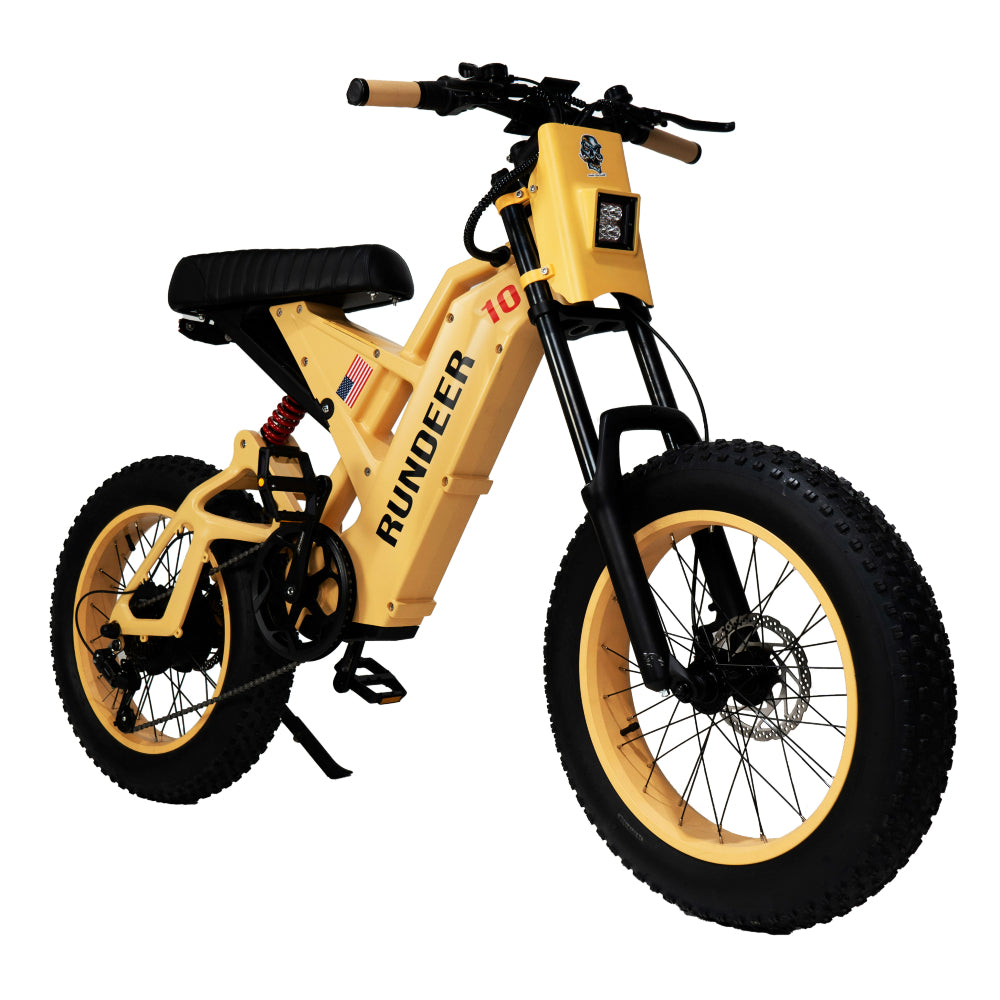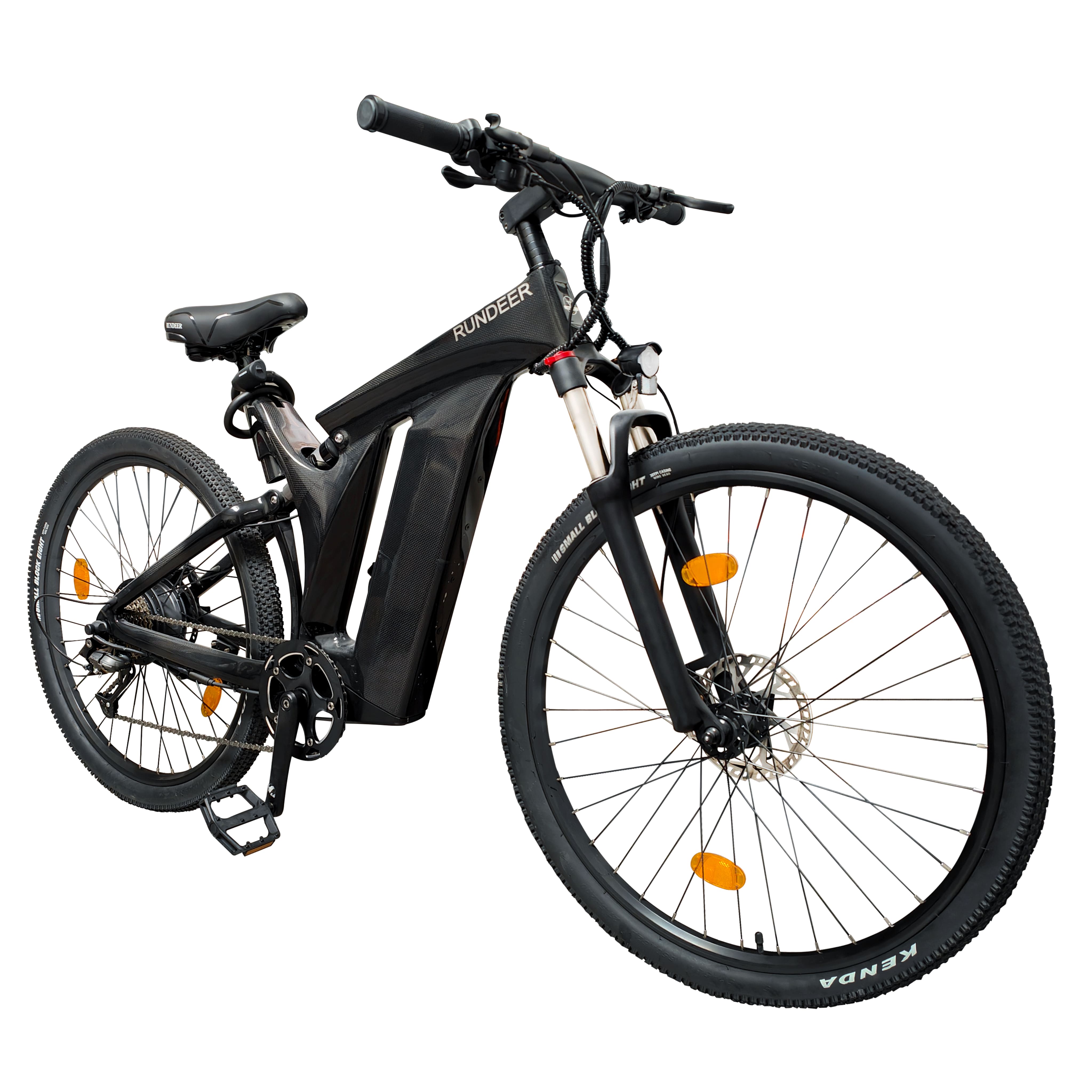
E-bikes have revolutionized urban mobility, offering a sustainable solution through the synergy of human and electric power. E-bikes have become exceedingly popular owing to the perfect blend of eco-friendliness, efficiency, and exhilarating performance. For the majority of cyclists, the question "how fast can an e-bike go?" is a central point of attention in the rapidly evolving world of electric mobility.
Defining "Top Speed" for E-bikes
In discussing e-bike speed, let us distinguish between theoretical possibility and legal reality.
Legal Speed Limits
The majority of jurisdictions globally have set explicit limits on how quickly electric bikes can lawfully ride using motor aid. These limits have multiple functions:
1. To ensure the safety of riders
2. To safeguard pedestrians and other road users
3. To keep distinct differences between e-bikes and more powerful vehicles such as mopeds and motorcycles
In the European Union, for example, e-bikes are generally limited to 25 km/h (15.5 mph) under motor power, while in most US states, higher speeds are allowed depending on classification.

Technical Speed Factors
Technically, the maximum speed of an e-bike is controlled by:
Motor Power Rating: In watts, the top power that can be fed by the motor. Standard is 250W, 500W, and 750W, but more watts are generally better for acceleration and climbing hills.
Controller Settings: Practically all e-bikes have electric controllers which reduce the motor help in compliance with local legal standards, whatever the motor can theoretically provide.
Battery Voltage: Higher voltage systems (48V versus 36V, for example) will deliver more power to the motor, and therefore potentially higher speed potential if not electronically limited.
The Function of Motor Power in Performance
Motor power plays an important role in determining the performance of an e-bike, particularly acceleration and cruising under challenging conditions.
Wattage and Acceleration
Level ground e-bikes generally come with 250W motors, which are enough for casual cruising on flat terrain. Upgrade to 500W provides noticeably improved acceleration and hill-climbing ability, while 750W and higher offers firm performance that can maintain faster speeds even when riding on gentle inclines.
Continuous vs. Peak Power
There is a need to differentiate between:
Continuous Power: The amount the motor can sustain for extended periods
Peak Power: Maximum output level for brief amounts of time (typically 2-3 times rated continuous power)
Peak ratings are most commonly quoted by the majority of motor manufacturers, although continuous power would be a closer reflection of every-day performance on normal riding circumstances.
Motor Types and Their Features of Performance
Hub Motors
● Built-in directly to front or rear wheel
● Tend to be less complex and less expensive
● Rear hub motors distribute weight more evenly and provide greater traction
● Front hub motors are simpler to install but may result in unbalanced handling
Mid-Drive Motors
● Integrated into the center of the bike, along with the pedal crankset
● Utilize the gearing system of the bike to enhance efficiency
● Typically provide more natural assistance that works along with the rider's pedaling
● Improved climbing ability for the same wattage ratings
Battery Capacity and Impact on Speed
While battery capacity is typically discussed in terms of range, it is also the key factor in determining speed performance.
Voltage Matters
A battery's voltage determines the amount of power directly delivered by the system:
● 36V systems are standard on most entry-level and middle-range e-bikes
● 48V systems offer greater power and more typically sustained better performance
● 52V systems offer still more scope for higher performance
Higher voltage systems permit more power transmission to the motor, resulting in improved acceleration and the capability for higher speeds to be maintained, particularly under problematic conditions.
Capacity and Load-Performance
Capacity in amp-hours (Ah) affects:
1. Total energy at hand: More Ah ratings correspond to more energy storage
2. Current delivery capability: Larger units tend to produce more current prior to sagging voltage
3. Performance constancy: Low-capacity batteries can degrade while charge is diminished
A high-capacity battery not only provides more range but also provides consistent performance throughout the discharge cycle without permitting speed reduction as the battery is depleted.
Terrain and Environmental Factors
The real-world speed of an electric bike is heavily influenced by external conditions beyond the bike's specifications.
The Weight Equation
Combined weight (rider + bike + cargo) directly impacts acceleration and climbing ability. Heavier loads require more power to reach and maintain speed, potentially reducing top speed capability on limited-power systems.
Gradient Changes Everything
Inclines dramatically increase power requirements:
- A 5% incline can reduce speed by 30-50% with the same power input
- Maintaining speed on hills often requires exponentially more power
- Descents can allow speeds well beyond motor-assist limits
Surface and Resistance Factors
Different riding environments create varying levels of resistance:
- Smooth pavement offers minimal rolling resistance
- Rough roads or gravel significantly increase power requirements
- Headwinds can reduce speed as dramatically as steep hills
Bike Design and Aerodynamics
The physical design of an e-bike plays a substantial role in determining its speed potential.
Weight and Materials
E-bikes constructed with lightweight materials like carbon fiber or aluminum alloys can achieve higher speeds with the same power input compared to heavier steel-framed alternatives. Every kilogram saved translates to improved acceleration and climbing ability.
Wheel and Tire Selection
Tire choice creates a significant trade-off between comfort, traction, and speed:
Narrow, high-pressure tires: Lower rolling resistance and higher potential speeds
Wider, lower-pressure tires: Better comfort and traction but increased rolling resistance
Riding Position
The rider's position creates a substantial aerodynamic difference:
- Upright comfort positions increase wind resistance
- Forward-leaning positions reduce frontal area and improve aerodynamics
- At speeds above 15 mph, aerodynamic drag becomes the dominant resistance factor

Ride Faster, Smarter, and Safer
Finding the perfect balance between speed potential, safety, and legal compliance is the key to a satisfying electric bike experience. Understanding the factors that influence performance—from motor power and battery specifications to bike design and maintenance—empowers riders to make informed decisions that maximize enjoyment while prioritizing responsibility on the road.













